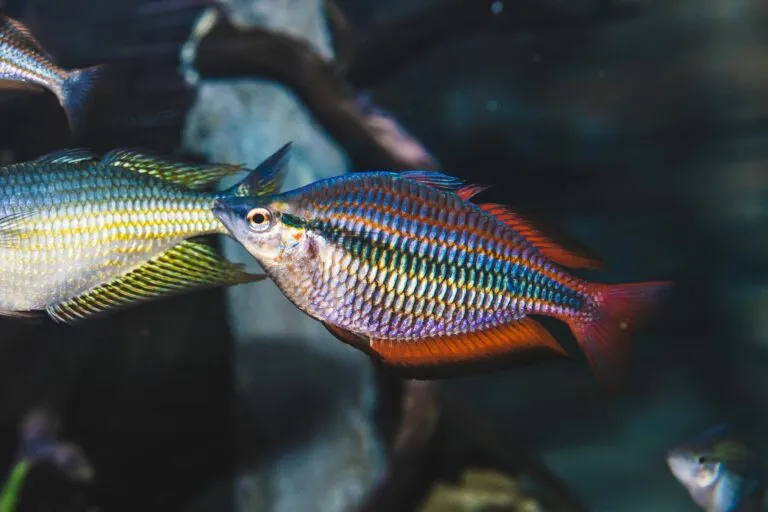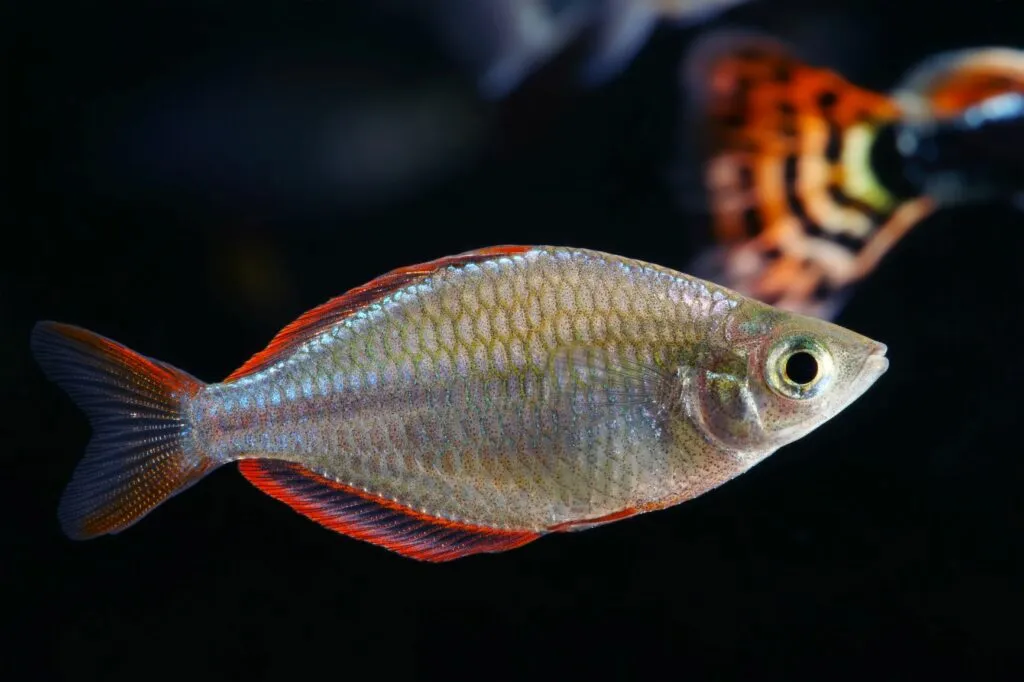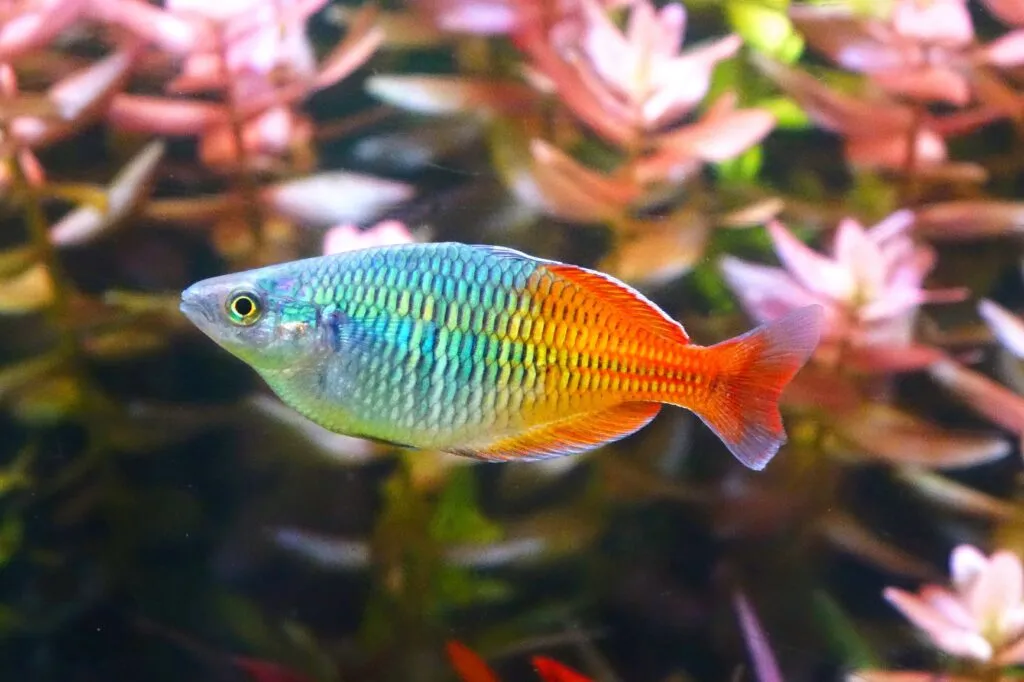Rainbowfish like nothing more than eating and swimming. Nonetheless, the striking fish have a calm and peaceful nature. Only in the mornings during mating season does the aquarium come to life.
This commotion, however, has its advantages. For it is during this time that the colours of this extraordinary water creature come into their most brilliant display.
Socialising Rainbowfish: Which Fish Go Well with Rainbowfish?
Keeping rainbowfish with their species in the aquarium will make their scales shimmer. In a community tank, these swimming beauties get along best with other peaceful and preferably similarly-sized species. Ideal tankmates include different rainbowfish species.
However, with non-conspecific fish, ensure all inhabitants of your aquarium get enough food; the rainbowfish is known to be gluttonous and won’t hesitate to snatch food away from others.
How to Breed Melanotaeniidae?
For seasoned aquarists, breeding rainbowfish is quite straightforward. It is most successful with a pair or a surplus of females.
Most species of rainbowfish spawn daily. However, parents typically eat the offspring. Hence, densely planted areas in the aquarium increase the chances of young fish surviving. For more targeted breeding, you can also transfer spawn-ridden plants to a breeding tank.
All rainbowfish species can interbreed with each other. To prevent so-called hybrids, aim for as pure a breed as possible.


